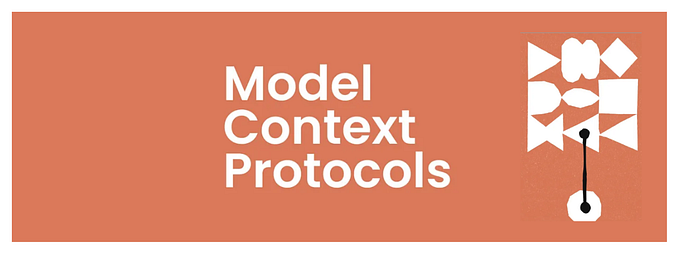Originally posted 22-Sep-22

The late Sue Feldman (1947–2020) was known for her expertise in search, text analytics, and cognitive computing.

Sue was founder and CEO of Synthexis, a consulting firm that provided business advisory services to vendors and buyers of cognitive computing, search and text analytics technologies. Since 1990, she was instrumental in shaping market research and understanding in search and text analytics. She spoke frequently at industry events on topics such as trends in computing, conversational systems, big data technologies, and the hidden costs of information work. In 2014, she led a coalition of industry experts to define cognitive computing. She wrote the chapter on search engines for the Encyclopedia of Library and Information Science and was the first editor of the IEEE Computer Society’s Digital Library News. Sue’s clients relied on her for strategic advice and business coaching, as well as for her wide network of contacts in the industry. In her book, The Answer Machine, Sue discussed the technologies behind information seeking and analysis, and their central role in the future of computing.
Before founding Synthexis, Sue was Vice President for Search and Discovery Technologies at IDC (International Data Corporation), where she directed research on the technologies and markets for search, text analytics, categorization, translation, mobile and rich media search. Prior to coming to IDC, Sue was founder and president of Datasearch, an independent technology advisory firm, where she consulted on usability and on information retrieval technologies. She was a founder and former president of the Association of Independent Information Professionals, a member of the Association for Computing Machinery, and won numerous research and writing awards.
Sue held degrees from Cornell University in linguistics and from the University of Michigan in information science.
Profiles
Book

Table of Contents
- Introduction
- The Query Process and Barriers to Finding Information Online
- Online Search: An Evolution
- Search and Discovery Technologies: An Overview
- Information Access: A Spectrum of Needs and Uses
- Future Tense: The Next Era in Information Access and Discovery
- Answer Machines
Bibliography
Conferences
Cognitive Computing & AI Summit 2019
Text Analytics World
- Text Analytics World 2012 — Keynote: Unified Access to Enterprise Information
- Text Analytics World 2013 — Five Trends That Will Reshape the Computing Landscape
Taxonomy Boot Camp
- Taxonomy Boot Camp 2006 — The Categorization Quandary: Making Choices
- Taxonomy Boot Camp 2005 — Welcome & Keynote: Why Categorize?
- Enterprise Search & Discovery 2019 — What’s Ahead for Search?
- Enterprise Search & Discovery 2018
- Evolution of Search & Discovery: A Panel Discussion
- Issues Surrounding Security, Privacy, and Ethics in Enterprise Search
- Keynote — Sparking Innovation: Human & Machine Learning & Knowledge Sharing
- Dynamic Developments Debate
- Enterprise Search Summit 2012 — Opening session: Trends in Enterprise Search: A Question and Answer Session
- Enterprise Search Summit East 2008 — Keynote Panel: Take a 30,000-Foot View of Enterprise Search Implementation
- Enterprise Search Summit West 2008 — Keynote — The Future of Search
- Enterprise Search Summit West 2007 — Welcome & Opening Keynote — Search in 2008: An Outlook for More Growth, Confusion & Chaos
- KMWorld 2015
- W15: Inspiration, Insights, & Innovation Through Cognitive Computing
- Keynote: Sparking Innovation: Cognitive Computing & KM — Transcript — Slides — Blog post — Video
- KMWorld 2014 — C301: Cognitive Computing & KM
Other Content
- Synthexis Publications
- Cognitive Computing
- Blog
- Pervasive Search White Paper
- KMWorld
- Cognitive Computing Consortium
- Considering Bias & Cognitive Systems
- Information Today
- Cognitive Computing and Search with Hadley Reynolds, interviewed by Jeff Fried
Is There a Future for Information Professionals? — November/December 1996
The imminent demise of the information professional has been a hot topic of discussion for years. It is something of a mystery to me why we are so convinced that we can be replaced, or so inclined to perceive new advances as threats. If we are so good at what we do, and others can’t seem to get the hang of it, why would the World Wide Web or an improved set of interfaces wipe us out? The answer, I think, is that we really don’t know what it is that we do. Sure, we “find information,” but what exactly does that entail? Perhaps if we assess our skills more precisely, we will be able to understand why our profession is not in danger of collapse.
Where Are We with Cognitive Computing Today? Part 1 — December 5, 2016
Cognitive computing is emerging as a significant part of the next generation of computing. Because it is early days in this new generation of computing, there is still no widespread understanding of what it is and how it differs from some of its relatives: AI, internet of things, machine learning, conversational systems, bots, or NLP. We see in both the US and in Europe that companies are very interested but are mostly still at the experimentation and proof of concept stage. We will be tracking some of these projects as they develop their cognitive applications and roll them out more broadly. There is no question, though, that interest is high, and that the ability to augment and assist users, as well as to move from static to dynamic systems has great appeal.
I recently had the opportunity to attend a focus group, sponsored by SAS Institute, on cognitive computing adoption outside the US. Attendees came from Denmark, Japan, Finland, Serbia, Netherlands, Sweden, Switzerland, India and Ireland. They represented financial services, telecom, consumer product manufacturers, government agencies, and airline companies. Here are some gleanings from their wide-ranging discussion.
How are you using or how do you expect to use cognitive computing?
- Automatically revise and evolve rules to expedite adaptation
- Uncover and improve best business practices and processes
- Detect patterns of behavior. Detect abnormalities. Identify risks.
Augment human agents who can’t handle the current workload by automating the more predictable aspects of the job.
Why move to cognitive computing?
- Handle large amounts of data with many more variables. Especially textual data.
- Reduce need for adding manpower. People just don’t scale.
- Stay ahead of competitors
- Uncover surprises. (This was a side benefit to a demonstration project that was originally designed to augment the human workforce)
- Curious to see what benefits might derive from cognitive computing that we can’t get now
- Get rid of silos
- Automate predictable or repeatable work
- Augment human work by developing digital assistants
Examples of uses:
Speech-to-speech product sales. One firm’s innovation lab is experimenting with building an App that will be personalized; will use machine learning to replace hundreds of business rules and 20 predictive models; and the machine learning will allow the models to evolve and help to revise rules faster.
- One firm is experimenting with discovering and extracting patterns of best business practices to establish KPI’s worldwide from hundreds of business managers’ individual knowledge. Need to understand what practices work and why.
- Expedite transactional processing. Moving from rules-based processes to teaching a system how to assess issues and minimize delays.
- Another firm is tracking and analyzing invoices using rules and econometric models. Their goal is to teach a system to automate model development and modification for tracking and analyzing invoices. Extending beyond rules and econometric models they want to add sentiment from incoming, non-English communications.
- Recognize patterns of behavior to find anomalies and predict risk in order to more thoroughly assess people and goods.
- Automate responses to customers, but on a more individual level. Part of a project to analyze customer opinions — a big data project.
In all cases, augmenting existing applications but seeking net new benefit from the use of cognitive computing systems was a consistent goal amongst all participants. Completely new product development or drastic changes to business processes from cognitive computing applications wasn’t seen to provide the palatable business benefit needed to embrace adoption. In all cases, however, changes and improvements to existing business practices were expected.
Where Are We with Cognitive Computing Today? Part 2 — December 12, 2016
I recently had the opportunity to attend a focus group, sponsored by SAS Institute, on cognitive computing adoption outside the US. The group of early adopters attending this focus group was proceeding with caution. They had the bruises from past new technology experiments and don’t believe the hype around AI today. In each case, it was apparent, however, that they had support from high-level management, and that they were starting with a proof of concept, or several. We have heard this from other buyers. Several enterprises are working with more than one vendor, trying to compare dissimilar products with little in the way of best practices to guide them.
Some of the concerns that emerged were, first, that these systems are often a black box; that it was not clear why they were getting the recommendations that were delivered. Because business systems are traditionally data-based and deterministic, rather than stochastic, this ambiguity appears to be unacceptable to them for some uses today. The buyers felt that they needed the evidence behind the results. Probabilistic systems, including search engines, have long struggled with this problem. Although we know that information systems of all sorts deliver only what you ask for and not what you should have asked for, nevertheless they are seen as precise and complete. Managing expectations is a challenge for vendors and for IT managers.
Other groups of attendees were concerned about the common requirement for an extraordinary amount of computing power to handle cognitive processing. Several mentioned the challenge of developing non-English applications because most of the research has been in English-based systems. Perhaps most intriguing in terms of issues, though, were the predictable “What-if” questions: will we lose the institutional memory that originally trained the system? If so and if the system breaks down, will we be able to fix it? Centralized systems are always a problem, they said. They must be up and running 24/7. They must be reliable. That’s a challenge for any system. Cognitive systems’ lack of a track record in production operations sets off risk alarm signals for many.
Finally, these cognitive experimenters pointed to interaction design as a great unknown, especially for non-IT, non-analyst business users who need access to data stores but won’t understand the system design behind the interface. Right now there are experiments, but no accepted best practices.
It is apparent that SAS is seizing this trend toward cognitive computing. The announcement of SAS Viya™ at this conference, along with a variety of tools for both their loyal developer and analyst base and a wider business user audience positions them nicely as both a partner with other cognitive and IOT platforms and as a potential competitor.








